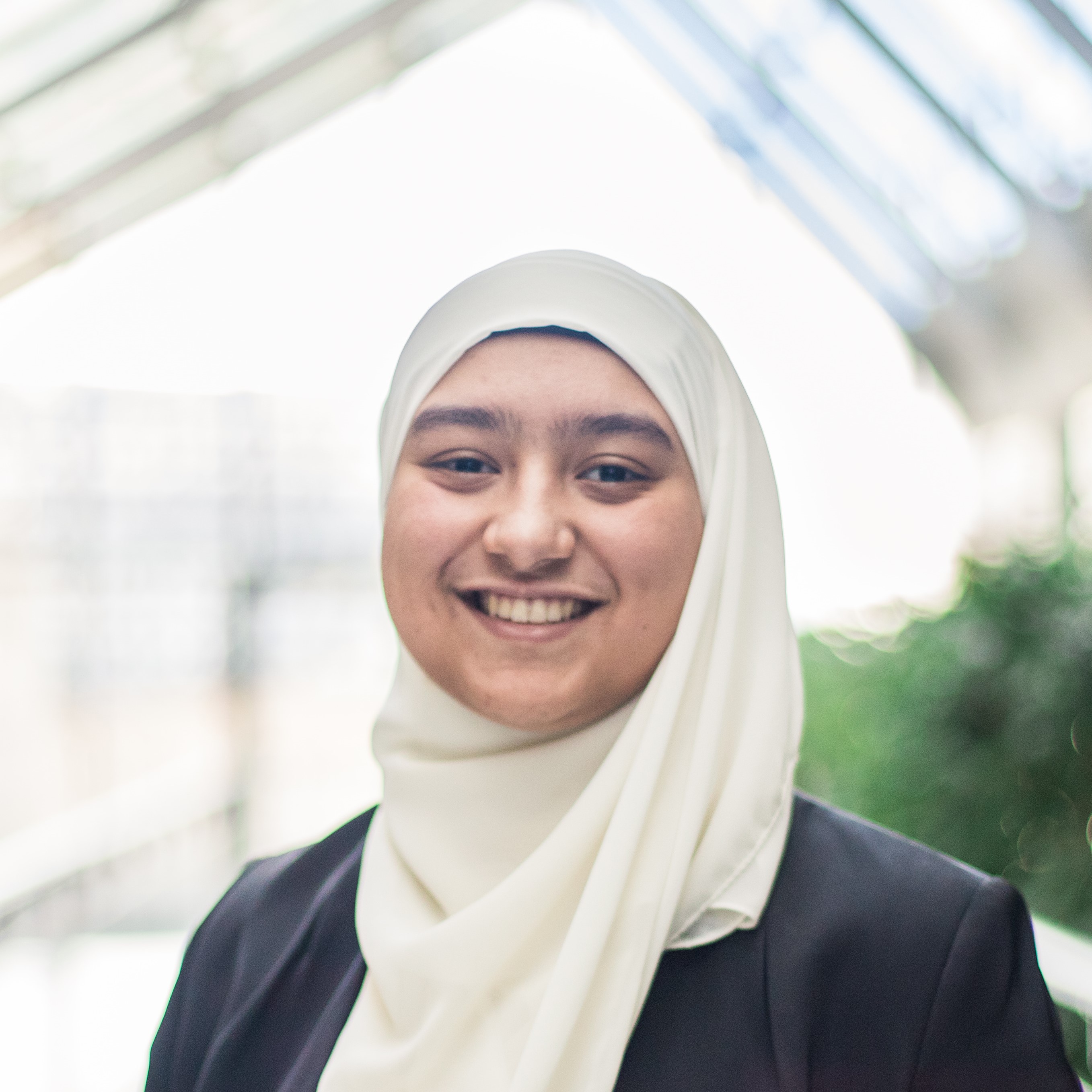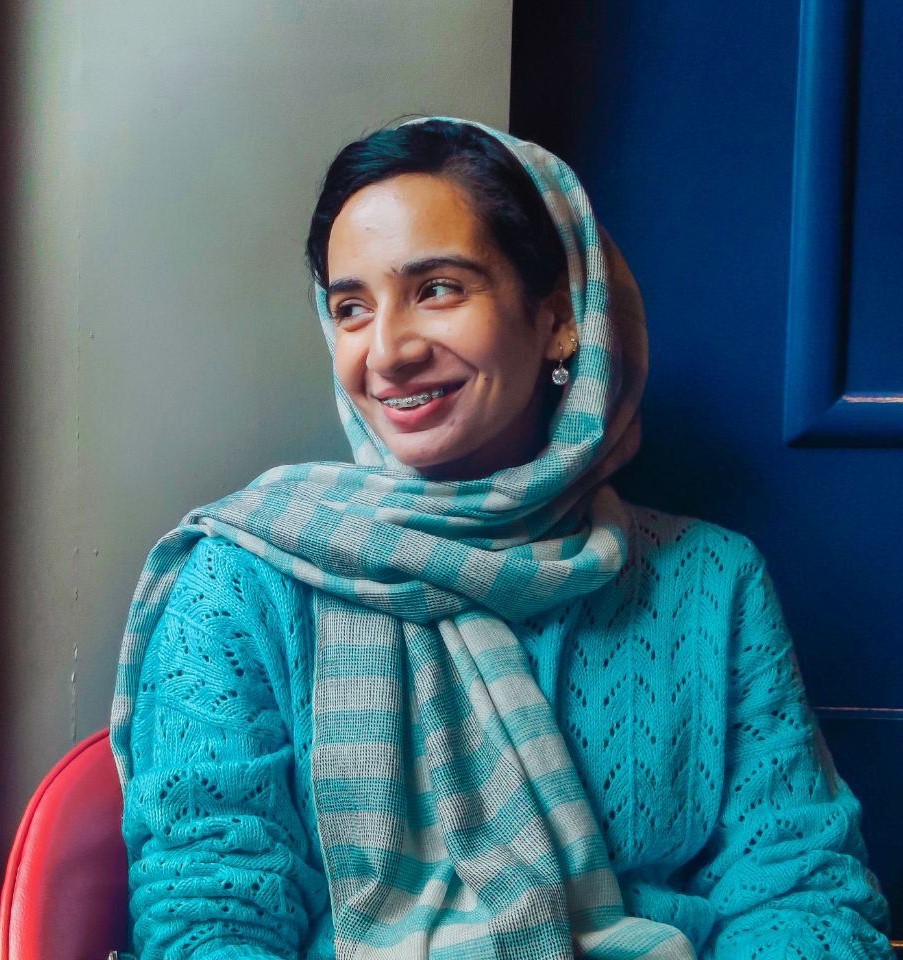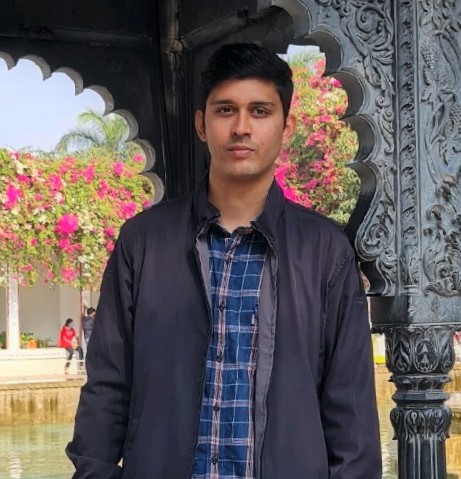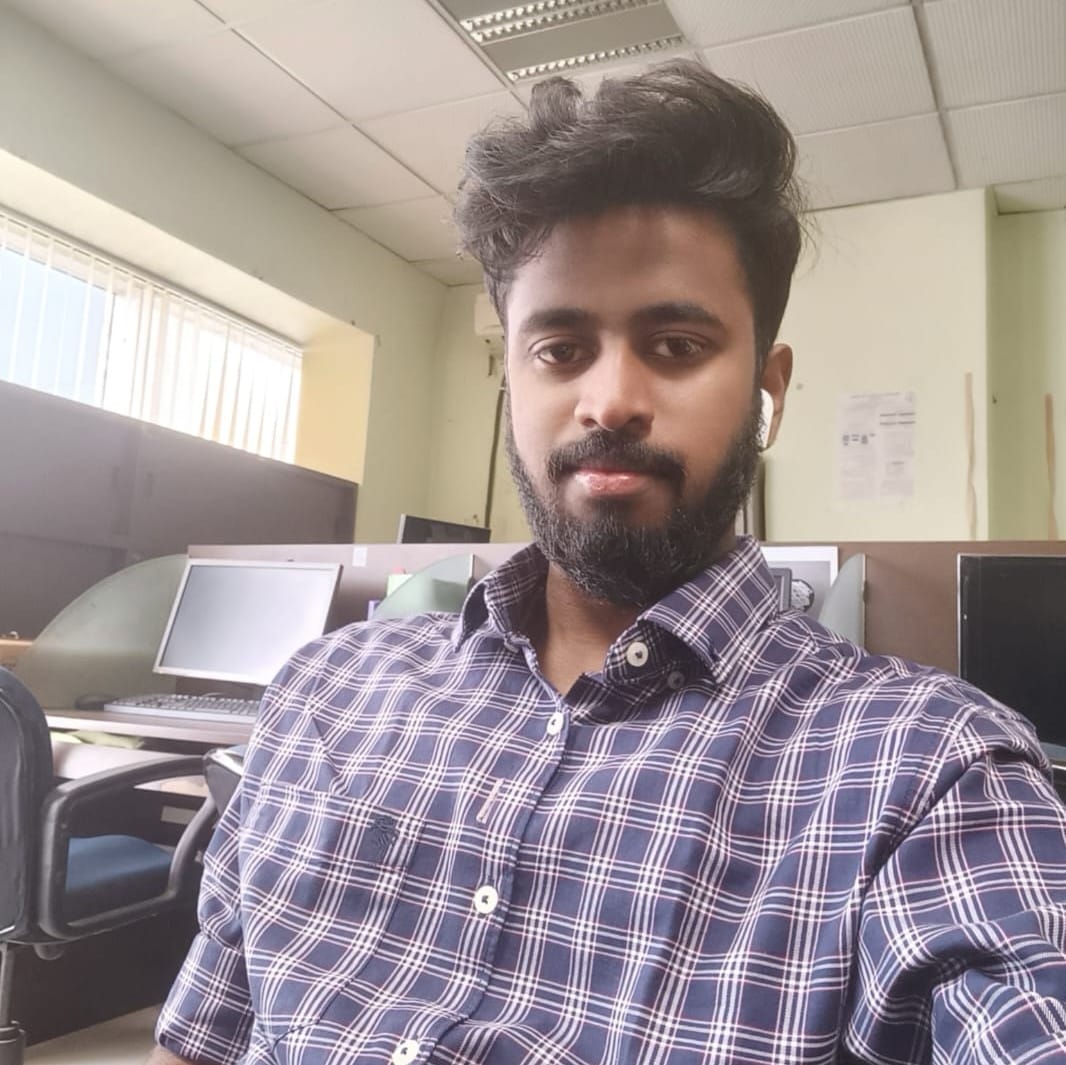PhD

Pranav Srivastava
Pranav is a PhD student at ADAPT Centre, MTU, Cork. He is supervised by me and co-supervised by Prof. Adam Jatowt and Dr. Haithem Afli. He is currently working on developing methods capable of bias discovery and bias control for image synthesis task. Prior to this, he has worked as Software Design & Development and Data Engineering expert for domains like - telecom, logistics, finance, etc. Few of his developed solutions include applying AI and NLP techniques on the text data to comply with data privacy, task automation and process improvements in the customer contact centre domain.
He has also worked on syntactic representation, semantic search and semantic reasoning for Dutch and English language-based customer problems in a telco. He holds a Masters degree in Artificial Intelligence (AI) from MTU. His other areas of interest include tech workshops, hackathons, tennis, photography are my other areas of interest. He is passionate about simplifying things on this planet. He believes that Responsible AI and Distributed Ledger Technology (DLT) are key ingredients for solving many of the real world problems.

Soumaya Sabry
Soumaya is a PhD student both at MTU, Cork and ENSICAEN, France. She is currently working at the GREYC research laboratory in Caen, France. She graduated from the Institut Polytechnique de Paris (IP Paris) in 2021 with a Master's degree in Data Science. She started her research career two years ago with the beginning of her master's degree at the DeVinci Researche Centre DVRC. During this time, she learned various aspects of data science such as computer vision, NN, NLP, etc. She is interested in applying her knowledge in health field to help people as much as she can. Her PhD goal is to create an empathetic avatar for therapeutic consultation.
PhD Project
Over the past few years, technology has evolved rapidly and has been adopted in the field of mental health for diagnosis or monitoring of patients. It began by employing various tools such as chatbots, and then expanded to embodied conversational agents (avatars) that involve a computer-generated character simulating a face-to-face conversation with verbal and non-verbal behavior. Based on previous findings, the younger generation is going to therapy less and less and on studies that show that young adults with mental and/or physical disorders are likely to use digital therapeutics to solve their health problems, this thesis project aims to create a digital humanoid avatar-therapist that can be consulted without any risk of judgment or social barrier. The avatar can also help therapists to automatically monitor their patients and thus save time. This avatar should be able to respond as humanely as possible by manifesting the three main keys to therapeutic empathy:
- Understanding what the patient is feeling,
- Communicating and demonstrating that understanding through empathic responses, facial expressions, and postures,
- Acting on that shared understanding in a therapeutic manner to help the patient.

Praveen Joshi
Praveen’s greatest passion is to bring AI closer to organizations that wish to thrive in a world where everyone benefits from AI. Praveen’s expertise ranges from many modalities, including AI Auditing, AI workshops, Architecture, Process flow, Resource, and Cost drafting, to the first stage infusion of AI into micro to large-scale industry. Praveen holds an MSc. in Artificial Intelligence and is pursuing a Doctorate in the EDGE/ FOG computing domain from Munster Technological University, Ireland.
PhD Project
Deep learning models in recent years have demonstrated remarkable achievements; despite the success due to the use of cloud servers for DL training and inference, it faced significant challenges such as high latency, increased communication cost, and privacy concerns. To mitigate the drawbacks, efforts have been made to find the intersection between deep learning and a fine mesh of computing devices (edge servers) near-to-end devices. His research provides insight into behavior expected from centralized, decentralized, and distributed architecture while combining edge servers' computation and storage power. Research directions look into various enabling technologies and model adaption techniques that can be utilized for deep learning training and deployment across resource-constrained edge servers while minimizing the energy requirement, lowering communication message size, and decreasing the memory footprint.

Nilesh Tete
Nilesh is a current doctoral student pursuing a joint bilateral PhD program 2022 in collaboration with GREYC LAB at University of Caen Normandy, France and in an ADVANCE CRT lab at the Munster Technological University, Ireland. He is supervised by me and co-supervised by Prof. Gaël Dias, Caen-Normandy University, France. His research interest lies in enhancing multimodal interaction with assistive interface technologies and HCI for an effective perception. He holds master’s degree in industrial design from Indian Institute of Technology Delhi and Bachelor of Electrical & Electronics Engineering from Anna University Chennai, India.
PhD Project
It always seems most computer interfaces are designed for established experienced users or professional. However, for the group under the term "textual blindness" this inability to easily interpret documents for perceptual reasons (low vision, non-vision) or cognitive reasons (receptive dysphasia, mental handicap) inexperienced common, disabled categories with limited capabilities, there is no user-friendly platform.
Focusing on haptic and auditory trans modality for access to Information in Text Blind Condition
The main objective of the research is to study & develop a multi modal interface a haptic platform and a sound platform to allow better access to Web documents, one by strategies based on vibratory feedback via a tactile device, and the other concurrent speech synthesis strategies. The results of this work allowed us to hypothesize that a multimodal platform integrating the two modalities will substantially improve the perception/action loop for the interpretation of Web documents in a situation of text blindness.

Sheresh Zahoor
Sheresh received her B.Tech. in Electronics and Communication and her M.Tech. in Signal Processing and Digital Design from NIT Srinagar and Delhi Technological University. She is in Munster Technological University in Ireland right now working on her doctorate. She is supervised by me and co-supervised by Prof. Gaël Dias, Caen-Normandy University, France. She carried out various Machine Learning projects while working as a Teaching Assistant during the Masters. Two publications based on her master’s-level research have been published. She has spent the last two years working in academia. Context aware Machine Learning in the area of eHealth is the focus of her study at MTU. Her aress of interest include Natural Language Processing, Data Analytics, Explainable AI and its applications, Context aware ML, Deep Learning.
PhD Project
Machine learning for health event prediction has become increasingly popular as a result of the widespread use of electronic health records (EHR) in healthcare institutions. Historical diagnoses are a frequent component of EHR data utilized for machine learning-based predictions. Current research mostly views a diagnosis as an isolated disease and does not consider the clinical relationships among diseases during a visit. Many machine learning techniques presumptively treat diseases as static entities throughout patient visits. However, in actual practice, several disorders that are frequently diagnosed simultaneously reveal underlying patterns that are helpful for prediction. Furthermore, a disease's progression is not always linear because some illnesses might manifest differently from one patient visit to the next and even reappear. The goal of this project is to provide a context-aware learning framework that can be used to efficiently exploit this mix of disease information and examine the dynamics of diseases. By utilizing the patient's physiological and activity data, the aim of this research is to develop intelligent and privacy-focused context-aware decision support system for health monitoring.

Keren Artiaga
Keren received her Bachelor of Science degree in Information Technology at De La Salle University - Dasmariñas, Philippines. She then obtained her Master of Science in Engineering in Environmental Science and New Energy Technology degree at the Tsinghua-Berkeley Shenzhen Institute (TBSI) of Tsinghua University, China, where her research aimed to measure the transferability of features and the adaptability of domains between different sign languages.
I am currently supervising Keren’s research on Sign Language Recognition and Translation at the ADAPT Centre, MTU, Cork. Keren is passionate about bridging the technological gap between high-resource and low-resource languages.
PhD Project
Sign language plays a crucial role in facilitating communication for people with hearing impairments. However, the availability of resources for sign language recognition (SLR) and translation (SLT) is severely limited, especially considering the existence of over 100 distinct sign languages. Consequently, most studies only focus on a few of these sign languages, and even then, they primarily tackle word-level sign language recognition. Sign languages are complete and distinct languages in their own right, possessing intricate linguistic structures, rules, and unique features.The primary objective of this PhD project is to develop an end-to-end system for continuous Sign Language recognition and translation to spoken language. Another objective is to address the low-resource nature of most sign language datasets.
Masters by Research

Pritish Patel
Pritish did his Bachelors in Computer Science from Thapar Institute of Engineering & Technology, India. He is currently pursuing his Masters by Research in Computer Science at Munster Technological University in Ireland. He is supervised by me and co-supervised by Fiona O’Halloran, MTU, Cork. He has carried out various Machine Learning projects during his bachelors. He also worked as a project intern at IIT Guwahati for two years. His areas of interest include Natural Language Processing and its application to Machine Learning, Data Analytics, Deep Learning.
Masters By Research Project
Artificial intelligence (AI) has made significant advancements in intelligent healthcare recently, opening up previously unimaginable prospects. Large amounts of data created during patient hospitalization during the last two decades have been spread in cyber-physical systems such as Hospital Information Systems (HIS) and Electronic Health Records (EHRs). ICD coding facilitates the storage, retrieval, and analysis of health information for evidence-based decision-making; sharing and comparing health information across hospitals, regions, settings, and countries; and data comparisons in the same site across different timelines.The application of deep neural networks to ICD coding has gained increasing attention. Deep neural networks can be used to extract and classify semantic data simultaneously, doing away with the requirement for medical expertise during feature selection. It structures algorithms in layers to create an “artificial neural network” that can learn and make intelligent decisions on its own.

Ramakrishna Pinninti
Ramakrishna did his Bachelors in Computer Science from Central Institute of Technology, India.He is currently Pursuing Masters by Research in computer Science at Munster Technological University in Ireland. He is supervised by me and co-supervised by Dr. Haithem Afli, MTU, Cork. He carried out various Deep Learning and Machine learning Projects during his bachelores. He also worked as Research Intern at Universite Caen Normandie Under supervision of Prof. Gael Dias for six months where he worked on knowledge graphs and language models. His area of Interest include Natural Language Processing, Deep Learning, Data Analysis, Machine Learning.
Masters By Research Project
Humor generation is a difficult task in the areas of computational linguistics, cognitive science for a few decades, and theorists have believed that incongruity contributes to the sensation of humor, many researchers studied logic, mathematical foundation, and computational model of humor. In this field, joke generation is very difficult whereas the researcher has proposed mathematical models to generate a fixed-structure joke. With the help of big data, the probabilistic model of sentence comprehension has helped to explain the features of the complex phenomenon of linguistic humor. The model selects the words and fills them with several fixed slots within a sentence structure rather than generating a complete joke, to We designed a knowledge-based humor generation, an approach to learning embedding of the Knowledge Bases. We are using Abstract Meaning Representation (AMR ) Graphs where it deals with semantics of the sentence and we integrate the AMR graph with Concept Net (External Knowledge), we pass these graphs through the GNN generator and we iterate it for certain epochs until the discriminator matches the True Humor.